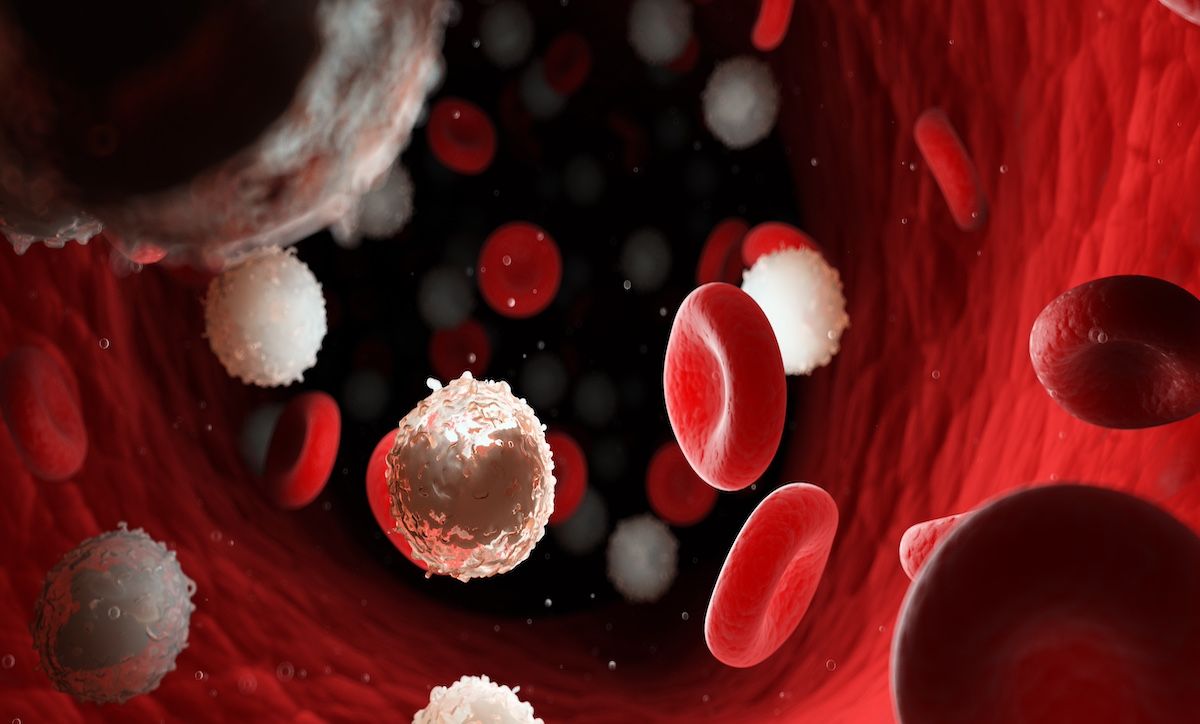News
Article
Treatment Strategies Including Venetoclax Effective Against CLL in Real-World, Long-Term Data
Author(s):
Abstracts presented at the 2024 European Hematology Association Congress deliver results on regimens involving venetoclax for chronic lymphocytic leukemia (CLL).
Venetoclax (Venclexta) appears to be effective in both real-world data and clinical trials for patients with chronic lymphocytic leukemia (CLL), according to results presented in abstracts at the 2024 European Hematology Association (EHA) Congress. Two of the abstracts focused on data from the CLL Collaborative Study of Real-World Evidence (CORE)—one in the first or second line of treatment and the other specifically after Bruton tyrosine kinase (BTK) inhibitors—whereas one provided outcomes after up to 5 years of follow-up in a phase 2 study.
Posters presented today included data from a study that assessed outcomes in patients with high-risk CLL treated with venetoclax in the international, real-world CORE study. | Image Credit: © WrightStudio - stock.adobe.com

Real-World Effectiveness of Venetoclax for CLL
First, a study assessed outcomes in patients with high-risk CLL treated with venetoclax in the international, real-world CORE study (n = 2020).1 About a quarter (24.7%) received venetoclax in any line of treatment, and 12.4% started it for the first time in the first or second line. Of these 126, 28.6% received venetoclax monotherapy and 71.4% received it in combination with obinutuzumab, rituximab, or other agents. The median patient age was 65.5 years, and median duration of venetoclax treatment was 12.7 months in the first line and 14.0 months in the second line.
First- and second-line venetoclax yielded similar overall response rates (ORRs), at 83.8% and 84.5%, respectively, whereas median progression-free survival (PFS) was not reached in the first line and 42.0 months in the second line. ORR was slightly higher in patients who received venetoclax as part of a combination than in the monotherapy group (85.3% vs 81.4%). Researchers also noted encouraging responses by particular high-risk CLL features:
- Del(17p)/TP53: ORR, 86.4%; median PFS, 42.6 months
- Unmutated IGHV: ORR, 86.7%; median PFS, 62.9 months
- Both: ORR, 81.0%; median PFS, 43.0 months
“Our findings, which are consistent with those reported from clinical trials, inform contemporary clinical practice for [patients] with poor prognosis and high unmet therapeutic needs,” the authors wrote.
Regarding next steps, “ideally, we’ll follow these patients up longer because some of the follow-ups especially for the frontline regimens are short, but nonetheless, I think our results show that venetoclax either in the front line or second line is still quite highly efficacious, even for the highest-risk patients,” presenting author Catherine Coombs, MD, of UCI Health, told The American Journal of Managed Care®.
Another abstract using data from the CORE study focused specifically on patients with CLL or small lymphocytic leukemia starting venetoclax after BTK inhibitor therapy.2 Of the 1515 patients taking BTK inhibitors, 705 discontinued that therapy, and 200 went on to start venetoclax. These 200 patients had a median age of 68.7 years, and 60.0% were male. Researchers reported their outcomes overall and by reason for BTK inhibitor discontinuation, by whether the venetoclax was given in combination with rituximab, and by line of therapy.
- Overall: ORR, 79.7; median PFS, 44.3 months
- Discontinued due to BTK intolerance (n = 85): ORR, 84.7%, median PFS, not reached
- Discontinued due to disease progression (n = 75): ORR, 76.0%; median PFS, 30.1 months
- Venetoclax plus rituximab (n = 60): ORR, 71.8%; median PFS, 39.5 months
- First-line BTK to second-line venetoclax (n = 68): ORR, 84.8%; median PFS, not reached
- Second-line BTK to third-line venetoclax (n = 73): ORR, 80.4%; median PFS, 44.3 months
The investigators highlighted that venetoclax was associated with a time to next treatment or death of at least 12 months for 83.6% of the overall recipients and for 82.8% to 85.9% of each subgroup.
Follow-Up in Phase 2 CAPTIVATE Study
Moving into the clinical trial space, another abstract yielded results from the phase 2 CAPTIVATE study (NCT02910583) of first-line ibrutinib and venetoclax in patients with CLL or small lymphocytic lymphoma.3 These patients received 3 cycles of ibrutinib and 12 cycles of ibrutinib plus venetoclax; they could then receive retreatment as needed with ibrutinib or the combination.
In the cohort receiving fixed-duration therapy (n = 159), 5-year PFS and overall survival rates were 67% and 96%, respectively, with higher PFS rates shown in patients with undetectable minimal residual disease by 3 months after end of treatment. Of 202 total patients who completed ibrutinib plus venetoclax therapy (fixed duration, n = 159; minimal residual disease–guided discontinuation, n = 43), 63 have experienced progressive disease. About half (51%) restarted treatment with ibrutinib (n = 25) or ibrutinib plus venetoclax (n = 7). ORR was 86% in the 22 evaluable patients in the former group and 71% in the 7 evaluable patients in the latter.
Investigators highlighted the clinically meaningful PFS seen not just in the overall population but also in patients with high-risk genomic features, such as del(17p)/mutated TP53), complex karyotype, del(11q), and unmutated IGHV. Retreatment involving ibrutinib “provides promising responses in [patients] needing subsequent therapy after the all-oral [fixed duration] regimen” of ibrutinib plus venetoclax, they concluded.
References
1. Coombs CC, Roeker L, Rhodes J, et al. Real-world treatment effectiveness in high-risk patients with chronic lymphocytic leukemia (CLL) receiving venetoclax-based therapy: an international study. Poster presented at: European Hematology Association 2024 Congress; June 13-16, 2024; Madrid, Spain. Poster P665.
2. Ghosh N, Eyre T, Brown JR, et al. Real-world treatment effectiveness in patients with chronic lymphocytic leukemia (CLL) receiving venetoclax-based therapy after Bruton tyrosine kinase inhibitors: an international study. Poster presented at: European Hematology Association 2024 Congress; June 13-16, 2024; Madrid, Spain. Poster P671.
3. Jacobs R, Wierda W, Barr PM, et al. Outcomes in high-risk subgroups after fixed-duration ibrutinib + venetoclax for chronic lymphocytic leukemia/small lymphocytic lymphoma: up to 5.5 years of follow-up in the phase 2 CAPTIVATE study. Poster presented at: European Hematology Association 2024 Congress; June 13-16, 2024; Madrid, Spain. Poster P675.
Newsletter
Stay ahead of policy, cost, and value—subscribe to AJMC for expert insights at the intersection of clinical care and health economics.




